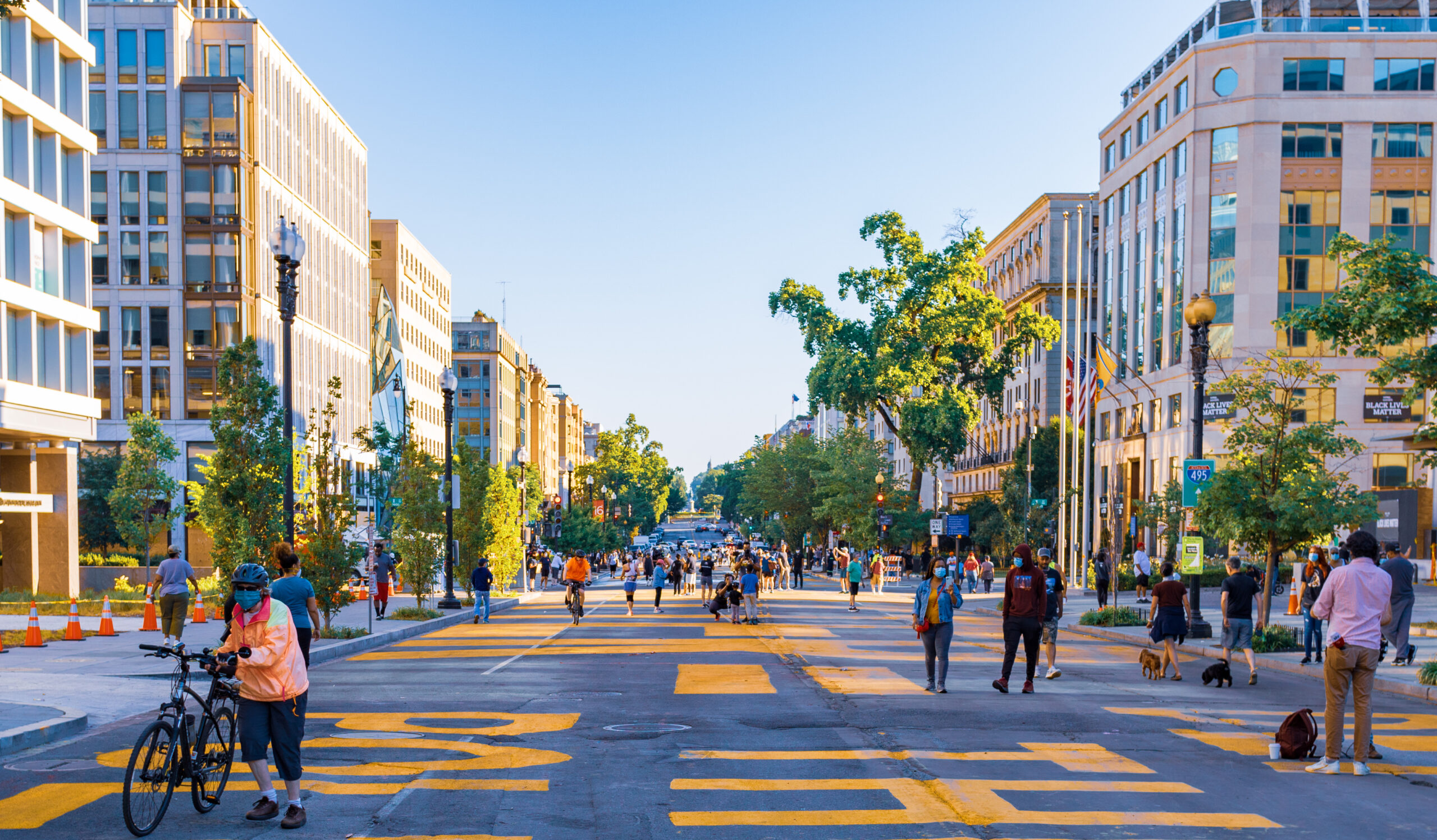Mobility and Climate Justice: It’s Not Just About Electric Vehicles

A new report from the Greenlining Institute evaluates the effectiveness of California’s clean transportation programs and proposes several important areas or reform.
Key takeaways:
- The government should increase funding for community-driven, anti-racist clean mobility programs with a holistic approach to diverse needs, rather than subsidizing electric vehicles for disproportionately whiter and wealthier Californians.
- State and local agencies should design programs for “targeted universalism,” providing broad benefits by making sure vulnerable populations are empowered, while replacing duplicative and redundant programs. In other words: “Designing a program to be accessible to those with the highest barriers will ensure that all will benefit.”
- More Teslas won’t cut it. “Governments at all levels should still continue to facilitate a transition to vehicle electrification focusing on the people who face the most barriers to access, but in the long run must foster policies that reduce congestion, vehicle trips and unsustainable land use patterns.”
California has a bevy of clean mobility programs aimed at reducing greenhouse gas emissions from transportation, and mitigating inequities in transportation access. As a recent state auditor report has demonstrated, many of these state programs are not evaluated clearly for their effectiveness. This is compounded by a lack of rigor in tracking social and racial equity.
The Greenlining Institute’s “Clean Mobility Equity: A Playbook” offers a compelling analysis and set of recommendations. The report aims to answer four basic questions: how effective are California’s clean mobility programs at delivering on equitable outcomes? Which ones are working, and which aren’t? And finally, what can other states learn from California’s experience?
The lion’s share of clean mobility program funding in California, such as the Clean Vehicle Rebate Project, “disproportionately benefits middle and higher-income White people.” This report recommends that “limited federal and state funds should instead be designated for more equitable programs like Clean Cars 4 All and the Clean Vehicle Assistance Program that are designed to reduce transportation disparities, not widen them.”
The shift from broad and poorly-coordinated electric vehicle incentives to robust, community-driven mobility solutions is central to all these recommendations. This is also illustrated by the report’s biggest policy recommendation for the state: “Current law requires that 35 percent of funds go to … priority populations, but state agencies can and should use their discretion to surpass this, raising the threshold to 100 percent.”
The report reminds readers that “racist policies like redlining, highway construction that segregates communities of color, and urban renewal created stark racial disparities in transportation and disproportionate air pollution in communities of color.” Therefore, mobility justice requires targeted investment for communities with the highest need, but also a holistic reckoning with structural racism and power imbalances. A race conscious approach is needed not just in program design, but program administration too, namely: “hiring, promoting, retention and representation of people of color in managerial or executive roles as well as governments’ external approaches to how they interact, partner and share decision-making power with communities of color.”
Building the institutional capacity of disadvantaged communities may seem like a heavy lift for state regulators, but Greenlining shows how much of the hard work is already being done by those communities themselves. “Instead of creating a brand new program that requires additional outreach and implementation, funding can simply help to reduce the emissions of existing programs,” the report recommends. The case studies of the Agricultural Worker Vanpool Pilot Project and Green Raiteros offer models for a bottom-up approach.
While these programs can be designed to build stronger community institutions from the bottom up, they could have a similar effect on the material wealth of local residents. Recommendations range from promoting local entrepreneurship with support for minority-owned businesses, workforce development and prevailing wage standards, paying residents for local outreach, and transferring capital stock from mobility platforms (whether bikes or electric vehicles) to local community groups if a grant-funded enterprise is discontinued. The Clean Mobility in Schools case study shows an example of compensating community members with stipends when conducting local outreach.
The report ultimately makes a strong case for more climate resiliency investments targeted to an ambitious, long-term vision for making communities whole: “State and federal funds must support mobility programs that holistically reduce greenhouse gases, air pollution and vehicle miles traveled while prioritizing the needs of low-income communities and communities of color.”
Photo by Ted Eytan, CC BY-SA 2.0, via Wikimedia Commons